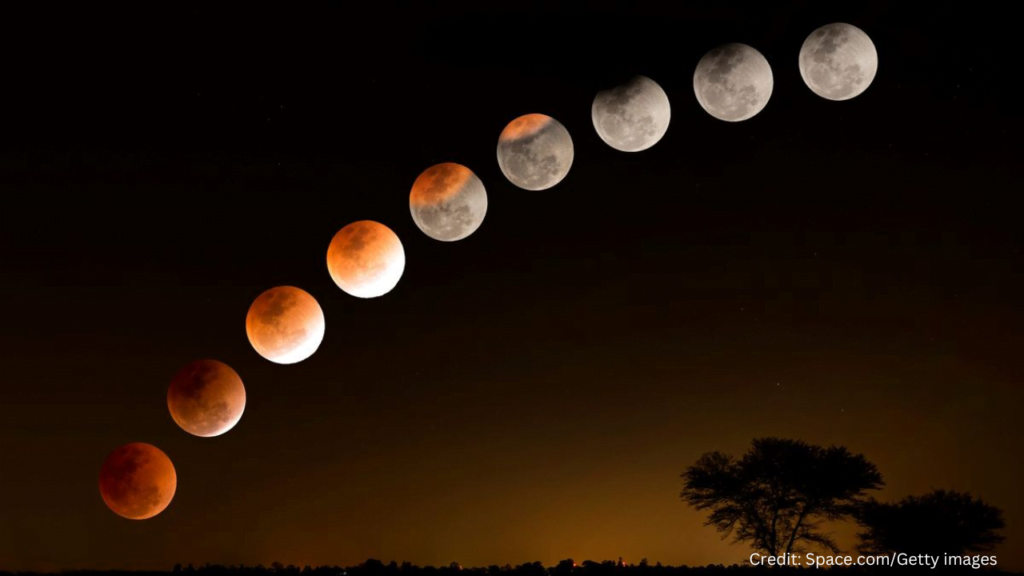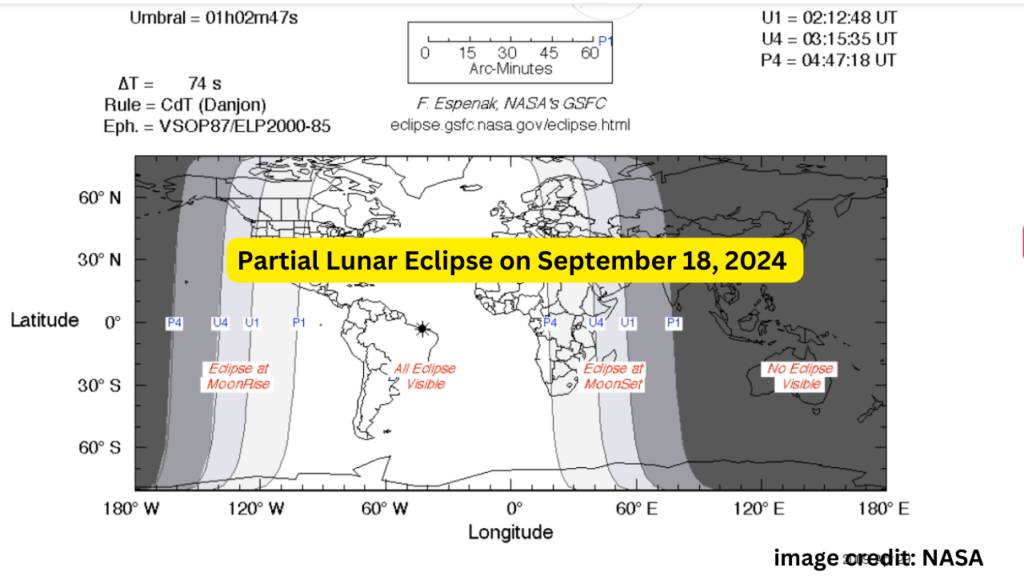
The next lunar eclipse in 2024 will be observed on March 24-25, 2024. It will be a penumbral one. According to TimeandDate.com, a large portion of Europe, North and East Asia, North America, South America, the Arctic, and Antarctica will be able to see the eclipse.
When Earth passes between the sun and the moon, it creates a shadow that travels across the moon’s surface during a lunar eclipse. They are a fascinating skywatching object and are only visible with a full moon.
Penumbral Lunar Eclipse:
It will be seen on March 24-25, 2024 wherein the moon pass through the farthest point of the Earth’s shadow, resulting in a very small moon eclipse. According to TimeandDate.com, it will be visible from a large portion of Europe, North and East Asia, North America, South America, the Arctic, and Antarctica.
It will be observed to start at 12:53 a.m. EDT (0453 GMT), reach its greatest stage a few hours later at 3:12 a.m. EDT (0712 GMT), and end at 5:32 a.m. EDT (0932 GMT). The eclipse will last for four hours and forty-nine minutes total.

Partial Lunar Eclipse:
It will occur on September 17–18, 2024, and will be visible over Europe, a significant portion of Asia, Africa, North America, South America, the Pacific, the Atlantic, the Indian Ocean, the Arctic, and Antarctica, according to TimeandDate.com.
The eclipse will start at 8:41 p.m. EDT (0141 GMT on September 18), reach its maximum at 10:44 p.m. EDT (0341 GMT on September 18), and end at 12:47 a.m. EDT (0547 GMT) on September 18. The partial lunar eclipse will last for four hours and six minutes in total.

Total Lunar Eclipse:
Unlike the total solar eclipse that will take place on April 8 this year, it is not happening in 2024. The next total moon eclipse will be occurred on March 14, 2025. During a total lunar eclipse, the moon seems to turn red as it moves through Earth’s shadow.
Experience the Lunar Magic: Tips for Enjoying Lunar Eclipses to the Fullest
You just need to walk outside, look up, and enjoy to see one. A telescope or any other specialized equipment is not required. Moon watching is fascinating during and after an eclipse, but binoculars or a small telescope will highlight features on the lunar surface. If the eclipse falls during the winter, wrap yourself warm if you intend to remain outside for the whole time. Eclipses can last up to two hours. Bring cozy seats or blankets, and warm beverages.
The Earth, Sun, and Moon are said to dance mesmerizingly during moon eclipses, which are among the most enthralling celestial occurrences. All ages and skill levels of skywatchers may see lunar eclipses since, unlike solar eclipse, they can be safely observed with the unaided eye and don’t require any specialized equipment.
The frequency of moon eclipses is one of the main factors contributing to their ease of observation. They occur two to four times a year on average. The Moon may exhibit a variety of hues during an eclipse, ranging from a faint coppery tint to a deep crimson, contingent upon the Earth’s atmospheric conditions. This is a breathtaking event.
Moreover, unlike solar eclipses, which are frequently only visible inside a small path known as the “path of totality,” moon eclipses may be seen from a large section of the Earth’s surface.
The moon eclipses are very simple to view because of their length. They can last many hours, in contrast to the short period of a total solar eclipse, which can only last a few minutes in any one place. This longer length gives skywatchers enough time to locate a good viewing location, erect the necessary telescopes or cameras, and take their time taking in the celestial view.
Distinguishing Lunar Eclipses from Solar Eclipses: Understanding the Contrast
A lunar eclipse occurs when Earth moves in front of the Sun and the Moon, causing a shadow to be cast on the moon. As a result, the Moon appears dimmer and frequently acquires a fiery or coppery shade, thus being called a “blood moon.”
A solar eclipse is when the Moon moves in front of the Sun so that part or all of the Sun’s light is blocked from reaching Earth. This may produce striking effects like a total solar eclipse, in which the Sun is completely hidden and only its corona, or outer atmosphere, is visible.







Pingback: White House Directs NASA to Develop New Lunar Time Zone by 2026